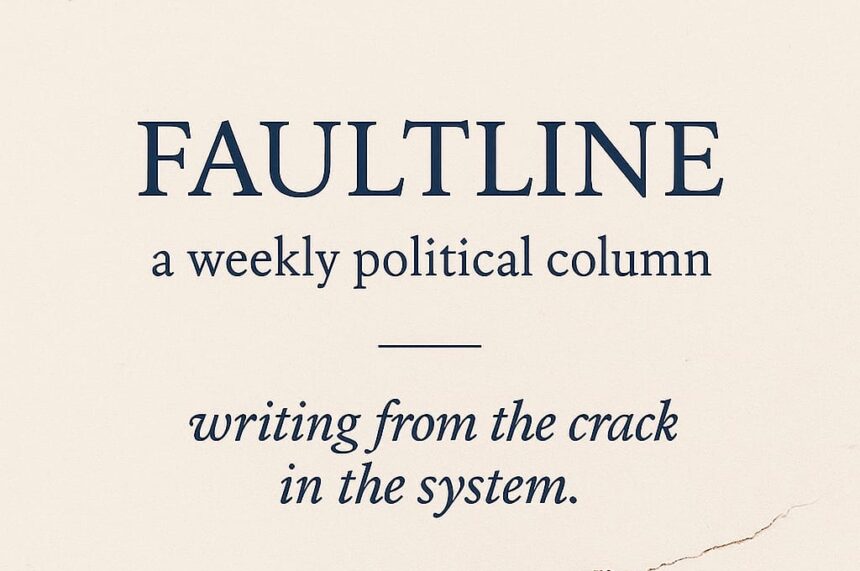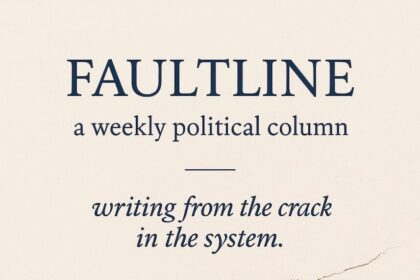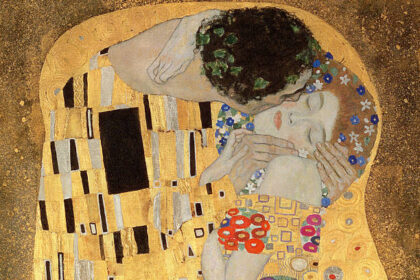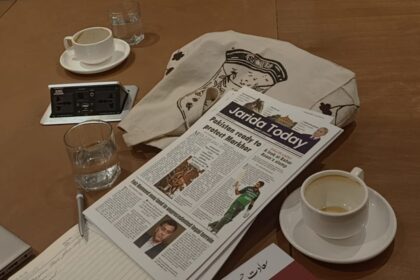Margaret Atwood once suggested that much of the world operates as an extension of male desire and its appetite for control. Male idealisation might not be an absolute product of postcolonial identity crises, but it has certainly been aggravated by the white man who once stood on Indian soil and allotted moral subjugation to its virility (or lack thereof). The male as a subject is a fascinating nuisance because it suffers from the unique struggle of unconditional victimhood while also implicating an enduring form of reverse colonisation upon every being that identifies as the ‘other’. Quite like Frankenstein waking up one day and deciding he wants to be a jihadist. Or when men declared that God was, in fact, not a woman.
What is more painful than gendering used as a psychosocial trap that even God cannot escape is the deliberate delusion of the common man that he is anything but a state apparatus. Rather than being a person, he is a function of war, lineage, and the overwhelming task of establishing dominance over women, knowledge, and any good culture that survived before ‘chauvinism’ was officially identified as a word. In the context of South Asian societies, this role is exacerbated by a state that militarises their masculinity and demands loyalty that often defies the ethics, otherwise throttling the social fragments of the Pakistani nation.
The man is not neutral. He is an instrument of heteronormative continuity and state propaganda, both of which allow his pain to be politically protected. In a way, the world is built to cushion the male wound.
When one begins interrogating masculinity, one finds it synonymous with confronting power at its most intimate scale. This interrogation starts with the institutionalisation of family, a construct deeply intertwined with the nationalist agenda that feeds our border ammunitions. The Pakistani man is not just a father; he is a domestic incubator of state surveillance and cognitive subversion. He serves as the juridical point of intersection when it comes to carrying the burden of law, honour, and the tiring process of ideological manipulation. Through him, the state finds a microcosmic unit of governance that ensures his children grow up to adhere to the state narrative and consent to eternal myth-making in the name of patriotic fervour. When boys learn that affection is conditional and that they are free to celebrate the disposability of women who internalise men’s needs before the latter even articulate them, intimacy becomes enclosure. Heterosexuality, in this context, is not an orientation but a political arrangement. This very act carries a quiet form of violence that is exploited in events of betrayed class disparity, or as the populist wing likes to call it, war.
The state, however, requires this arrangement. And while it pathologises its female subjects, the unemployed, traumatised, violent man is offered cultural legitimacy simply for following through with the asymmetrical role assigned to him. He is never outside the nation. He is the nation.
In the containment of the male as a failed project, this author does not merely refer to individual men but the systemic investment in masculinity as a solution to a crisis, examples of which have played out in Pakistan with devastating consequences. The War on Terror, beyond its ideological naivety and perfect case study for consensual imperialism (if there is such a thing), was a flagship era that allowed the Pakistani nation to masculinise its demographic legitimacy further. From the swaggering ISPR videos to the boy-child parades holding flags and national anthems, the military state not only deployed its men into a vicious cycle of psychosexual rhetoric but also successfully entrenched itself into a gendered form of nationalism – one that excluded all essential stakeholders. Operations like Raah e Nijaat, Radd ul Fasaad, etc., are deliberately named in androcentric contexts to manufacture masculine connotations of acts like surgical precision, righteousness, and paternal protection, blurring the lines between governance and totalitarianism, while infantilising the state to create a perpetual cycle of security threats that need to be dealt with.
But the question remains: who becomes collateral damage in the state’s pursuit of hypermasculine order? It is the Baloch who was forcibly disappeared, freed, and then killed in a ‘counter-insurgency’. It is the Pashtun man labelled a terrorist when a drone drops on his house; it is the civilian protester tried in military courts because nothing proves allegiance better than jingoism with a side of a fascist epidemic. In this way, masculinity is not evenly distributed. It is centralised in Punjab, ethnicised every day, and then feigned surprise at.
Yet men are not only complicit but afraid. The discourse surrounding this fragility points directly to a fear of irrelevance. If masculinity no longer guarantees control, then what use is it beyond spectacle? Men perform manhood not to lead but to be seen leading. In a way, this is a counterintuitive form of voyeurism that Atwood probably truly pointed at, but which failed the alpha podcast bylines by a short distance spanning literacy.
The solution, therefore, does not lie in the ‘feminist husband’ or the ‘emotionally available partner’ but in the structural demilitarisation of the male subject. It demands divestment from the colonisation of the male body (if that could ever be achieved), while also refusing the sentimental redemption of men who have done harm. Men cannot be coddled for simply having survived patriarchy because it morally deflects from their very direct complicity in upholding a system that has destroyed generations (and will continue to do so). Despite all odds, their survival is not exoneration.
There cannot be an ethical state in Pakistan or beyond unless the male subject ceases to be its foundation or the architect of its future. It is time we stopped mourning the loss of the male exoskeleton and created something else. Not a better man, but a world that does not need one.












